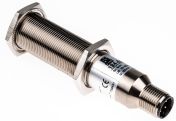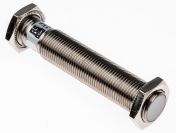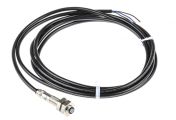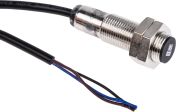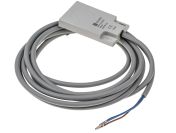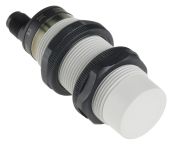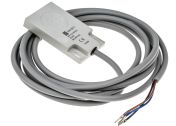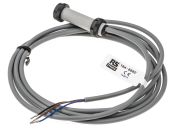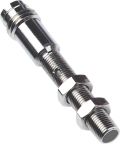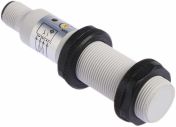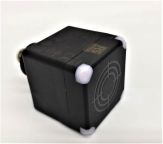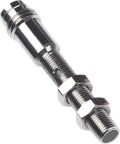Proximity Sensors
What is a proximity sensor? A proximity sensor is a non-contact component designed to detect the presence or absence of an object without physical contact. It offers a valuable solution for working with delicate or unstable objects. Proximity sensors have key features and benefits, including motion detection of metallic and non-metallic objects, wide temperature range (-50°C to 100°C), high-speed motion sensing without contact, usability in applications with oil or water, and quicker response times compared to contactors. You can find out more on our useful guide to proximity sensors below.
Types of Proximity Sensors
There are various types of proximity sensors suitable for different industrial applications in New Zealand. They operate based on a universal working principle and transmit data about an object’s presence or motion via an electrical signal when the object is within the sensor's range. Here are some common types:
Infrared Sensors (IR Sensor)
Infrared (IR) proximity sensors consist of passive infrared sensors (PIR) and active IR sensors. PIR sensors utilise pyroelectric infrared sensors in a magnetic lens, which detect changes in the signal between them. Active IR sensors employ an infrared LED that emits an infrared beam to an infrared receiver to detect obstacles that block the infrared radiation.
Inductive Proximity Sensors
Inductive proximity sensors, known as proximity switches or position sensors in New Zealand, generate an electromagnetic field through an oscillating circuit. Any ferrous metal object, including aluminium, copper, brass, and iron, triggers a change in the oscillation, indicating its presence.
Capacitive Proximity Sensors
Capacitive proximity sensors can detect various shapes and materials, even through non-metallic walls. They are suitable for use with non-ferrous materials and find applications in close-range tasks like level detection and monitoring.
Ultrasonic Proximity Sensors
Ultrasonic proximity sensors emit and receive high-frequency sound waves that can be reflected or absorbed by objects within their range. These sensors are ideal for high-speed and long-range measurements, such as wind speed, fluid level, and speed through air or water.
Magnetic Proximity Sensors
Magnetic proximity sensors measure the presence or absence of an object using an external magnetic field. The sensor's reed switch is operated by a magnet, activating the sensor when the reed switch is turned on.
Applications and Industries
Proximity sensors are widely used in various industries in New Zealand. The type of proximity sensor to buy depends on your application scenario, and some common ones include:
- Automation Systems: Small capacitive proximity sensors may be used to detect the presence or absence of objects on conveyor belts, count components on production lines, and automatically trigger machine shutdowns when process interruptions occur.
- Robotics: Ultrasonic and IR sensors are frequently used to help robots identify obstacles from a distance so robots can navigate around them effectively.
- Industrial Manufacturing: In industrial manufacturing, proximity sensors can help in operations such as pick-and-place tasks, inventory management, dispensing, and the sorting and gating of products. An example is the use of an RFID sensor, which can generate extensive, precise information about the objects to which they are affixed, allowing improvements to be made to enhance supply chain efficiency. Others, like photoelectric proximity sensors, can be used in an automobile assembly line. Here, the sensors can instruct linear actuators to halt each part of the automobile precisely at the appropriate station, enabling them to be welded or processed accurately.
- Security Systems: Wireless proximity sensors can be configured to activate sounder beacons when someone enters a restricted area. Meanwhile, optical proximity sensors can serve as metal detectors in security systems.
- Mobile Devices: In mobile phones, a proximity sensor is primarily used to detect when the device is held close to the face. This allows the phone to temporarily switch off the display to conserve battery life and deactivate the touch screen to prevent accidental touches and unwanted actions.
How to Order Proximity Switch Sensors from RS?
Proximity sensors play a crucial role in enhancing industrial safety, efficiency, and accuracy in processes involving object detection, motion sensing, level monitoring, and presence verification. Their importance in various aspects of industrial operations makes choosing the right products from a reliable supplier especially crucial, and this is where RS New Zealand can fill the gap.
Whether you need PNP or NPN proximity sensors or related products, such as photoelectric sensors and pressure sensors, RS offers a wide selection to meet your varied needs. Our products, offered at competitive prices, are specially curated from reliable brands, such as BALLUFF, Carlo Gavazzi, and our own brand, RS PRO, ensuring you find the ideal device for your needs at great value..
Delivery Information for New Zealand
To have your purchases delivered the next working day, please place your orders for items stocked locally in New Zealand or Australia before 5 pm NZT and 3 pm NZT, respectively.
RS will deliver your proximity sensors and orders between 8 am and 5 pm local time the next working day. However, a longer lead time may be required for some products, including:
Extended lead times may also apply to non-core products and deliveries to specific regional areas. For further details or to arrange consolidated delivery, please speak to our Customer Service.
Popular Searches
Related links
- Detecting Motion: Proximity Sensor Types and Applications
- Eaton Capacitive Threaded Barrel Proximity Sensor 8 mm Detection 20 V
- Carlo Gavazzi Capacitive Smooth Barrel Proximity Sensor Relay NO+NC, 230 V ac
- Carlo Gavazzi Capacitive Threaded Barrel Proximity Sensor 20 mm Detection 230 V ac
- Carlo Gavazzi Capacitive Smooth Barrel Proximity Sensor Relay NO+NC, 120 V ac
- Turck Capacitive Block Proximity Sensor 10 mm Detection 10 → 65 V dc
- ifm electronic Capacitive Rectangular Proximity Sensor PNP NO/NC, 10 → 36 V dc
- ifm electronic Capacitive Rectangular Proximity Sensor PNP NO, 10 → 36 V dc
